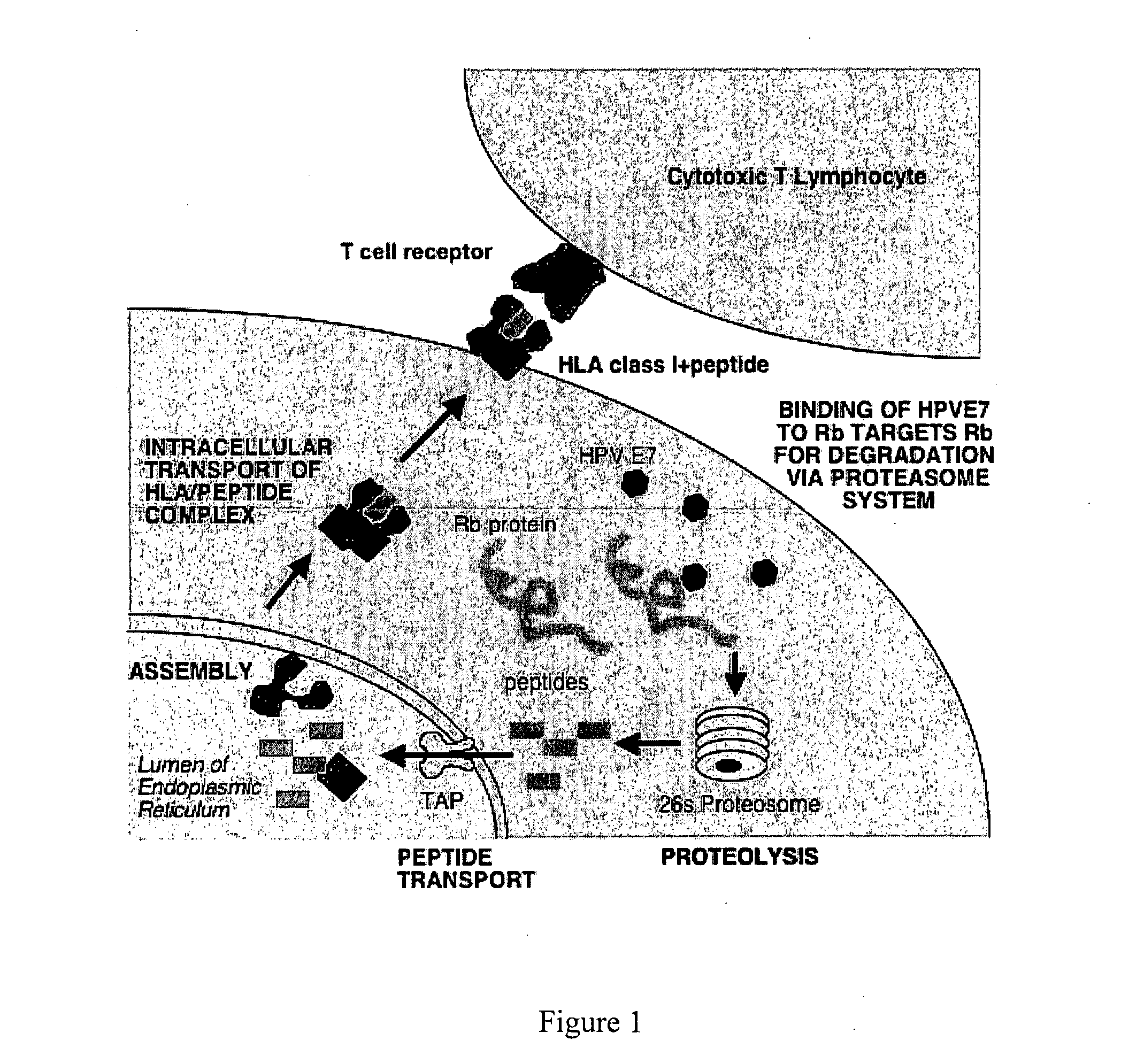HPV vaccine comprising peptides from host cell proteins
a technology of host cell proteins and peptides, which is applied in the direction of peptides, drugs, viruses, etc., can solve the problems of destroying healthy as well as malignant cells, hpv can progress and develop into cancer, burning or slight bleeding,
- Summary
- Abstract
- Description
- Claims
- Application Information
AI Technical Summary
Problems solved by technology
Method used
Image
Examples
Embodiment Construction
[0064] Candidate 9 or 10 amino acid peptides from 15 proteins were selected for analysis, see Table 4 for the full list of peptides. One hundred and two peptides predicted to bind to HLA-A*0201 were selected according to published algorithms (33,34). (Table 4). The algorithm we used has been used previously to successfully predict other tumour-specific CTL epitopes (17). We chose HLA-A*0201 as the co-presenting peptide as this is the most common HLA allele (˜40%) among Caucasians, and there are well-defined in vivo and in vitro model systems to facilitate proof of concept experiments. From the initial list of 102 peptides, 62 were synthesized for testing.
Peptides were Tested for Binding to HLA-A*0201.
[0065] CTL recognise peptides bound to HLA class I molecules on the cell surface. Therefore peptides must demonstrate binding to HLA to be useful. This can be measured by using a cell based assay measuring an increase in HLA-A*0201 expression resulting from binding.
[0066] A cell-bas...
PUM
| Property | Measurement | Unit |
|---|---|---|
| length | aaaaa | aaaaa |
| histo-compatibility | aaaaa | aaaaa |
| frequency | aaaaa | aaaaa |
Abstract
Description
Claims
Application Information
 Login to View More
Login to View More - R&D
- Intellectual Property
- Life Sciences
- Materials
- Tech Scout
- Unparalleled Data Quality
- Higher Quality Content
- 60% Fewer Hallucinations
Browse by: Latest US Patents, China's latest patents, Technical Efficacy Thesaurus, Application Domain, Technology Topic, Popular Technical Reports.
© 2025 PatSnap. All rights reserved.Legal|Privacy policy|Modern Slavery Act Transparency Statement|Sitemap|About US| Contact US: help@patsnap.com



